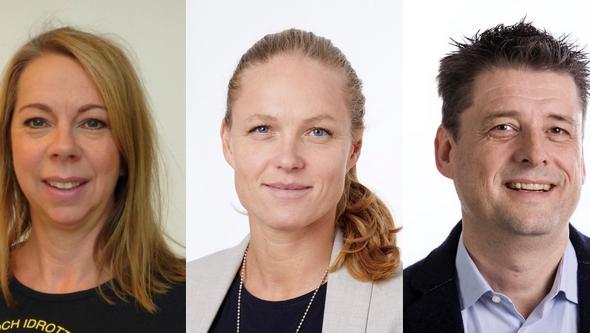Physical activity, social interaction, and a sense of community are among the effects of walking football - known as walking soccer in the U.S. - an increasingly popular senior sport now addressed in a Swedish scientific study. The research results show that the sport promotes health and has the potential to get more people exercising far into old age.

The study was carried out jointly by the Swedish School of Sport and Health Sciences (GIH), the Center for Health and Performance (CHP) at the University of Gothenburg, and the Swedish Football Association (SvFF), within the framework of its "Walking Football for Health" project.
Walking football resembles the regular version of the game (soccer) but is usually played on a smaller pitch, with fewer players per team, and at walking pace. A player must always have one foot touching the ground. A few studies have analyzed how the sport can improve physical and mental health and foster social contacts. However, previous studies have focused largely on older men, and studies in a Swedish setting have been lacking.
Field and lab testing
In the present study, 65 walking football players from three clubs (Enskede IK, IFK Viksjö, and IF Elfsborg) were included. The players participated in up to four field tests of six-players teams in two halves of 20 minutes each. On one occasion, the participants underwent various laboratory tests of performance, including strength, fitness, balance, and jumping ability. They were also asked to fill out a questionnaire about walking football, sociodemographic variables (age, gender, education, etcetera), lifestyle, and health.
The group investigated comprised 45 men and 20 women, aged 71 years on average, whose health profile conformed to that of the general population of the same age. Two-thirds were overweight (BMI over 25), and nearly half had been diagnosed with high blood pressure.
Compared with the general population, the walking footballers' fitness, grip strength, balance, leg strength, and jumping ability were somewhat higher. Their physical activity pattern, measured with pedometers over seven days, was comparable to that of younger people (aged 50-64) in the general population.
GPS data showed that the participants' covered a distance of averaged 2.4 kilometers (2.5 for men and 2.2 for women) in the course of a 40-minute walking football game. Their average heart rate was 131 beats per minute in the first half and 133 in the second. On the 20-point Borg Rating of Perceived Exertion (RPE) Scale, participants ranked 12.1 for the first half and 12.9 for the second.
Intensity suitable for many
Both before and after walking football sessions, the participants' self-rated well-being was relatively high. The main reasons they cited for taking part in organized walking football were socializing with others, exercise and physical training, being part of a group and team, and having previously played football and found they were missing it.
"Overall, the results show that a 40-minute walking football session is a medium-intensity activity for the target group studied," says GIH University Lecturer Helena Andersson, now active at Umeå University.
"The study also shows that the participants in this group not only feel well and are already active, but come from varying backgrounds and walks of life. This opens the way for many more people to be included and stay active right up to an advanced age," says University Lecturer Elin Ekblom Bak at GIH.
"Walking football roughly corresponds to what's often intended with the Swedish method Physical Activity on Prescription, which is aimed at preventing and treating disease," says Professor Mats Börjesson of the University of Gothenburg. "In order to include walking football in the method we want to proceed with an intervention study where walking football is tested as a treatment."







